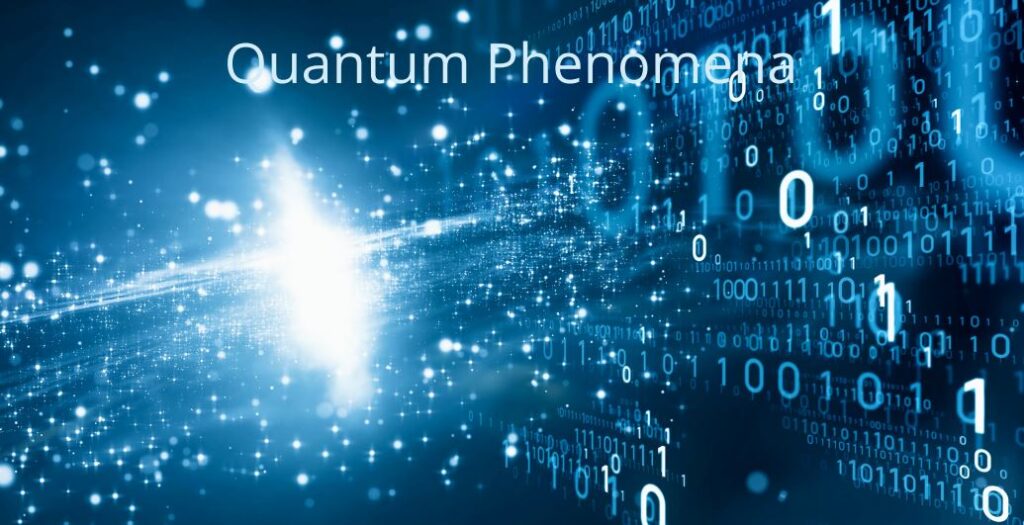Quantum Cryptography: Cryptography is the art of hiding messages. Converting a regular message to an undetected form is called encryption. The reverse action, the reconstruction of the message in its original form, is called decryption. The original text is called plain text, while the encrypted text is called ciphertext. The encryption protocol describes the whole required process. The history of cryptography begins precisely with the desire of people to send private messages to each other. The more efforts were made towards the concealment techniques, the more they were made in the direction of their undoing for the interception of information, and thus the branch of cryptology was born. As we understand it, classical cryptography led scientists to create a system that would allow two people to exchange information with complete security.
In 1940, Claude Shannon proved that this goal was unattainable unless the two communicating parties shared a random secret key, which had both the same height as the message they wanted to exchange. Additionally, this private key can only be used once.
Classic Cryptography to Quantum Cryptography
In quantum cryptography, however, this pessimistic theory can be overcome if we take advantage of the inability to accurately measure quantum information and the disturbance inevitably caused by such measurements.
When information is properly encoded in quantum states, any attempt by anyone to gain access to it necessarily carries with it the potential for irreparable damage to information. Legitimate users can detect this disturbance, thus establishing a secure connection without sharing a common secret key.
It is interesting to note that quantum computers threaten most of the classical cryptographic schemes currently in use, but quantum cryptography offers a secure alternative without conditions.

Quantum Cryptography Phenomena
I analyzed classic encryption and how it works with the corresponding protocols in a previous article.
In the classical (non-quantum) world, voltages represent binary bits. Transistors are used to handle voltages and apply Boolean functions rationally. In the quantum world, one binary bit is described as a qubit. A qubit in any quantum system has two states. It can be an electron with spin up and down states or a photon that can be polarized in either direction.
Four quantum phenomena make quantum computing particularly interesting:
- Interference – Contribution (Previously studied)
- Superposition
- Entanglement
- Non-clonability
Interference
Interference is the situation where the wave functions of particles can either reinforce or diminish each other. The most important contribution of quantum encryption is an interference detection mechanism. This contribution is something utterly new in the field of encryption.
Superposition
The principle of Superposition states that if a quantum system can be counted in one of several states, it can be in a sample of all states simultaneously.
- Result: An n-bit qubit register can simultaneously be in all (both) states. Massively parallel functions.
- Given a qubit, what does a superposition situation look like? A steady-state is a spin-up or spin-down.
Entanglement
- If two or more qubits interact, they can be found in a shared quantum state that differs from any combination of independent quantum states.
- Result: If two entangled qubits are separated at any distance, and one of them is measured, then the other, at the same time, goes to the predicted state.
Non-clonability
The fourth unique feature of quantum systems is called the no-cloning theory and states that it is impossible to make a perfect copy of an unknown quantum state.
Quantum Cryptography –Three essential and famous quantum communication protocols
- Protocol BB84, (Bennett, Brassard 1984): It is the first quantum encryption protocol invented in 1984 by Bennett and Brassard. This protocol was used experimentally for propagation up to 30km through fiber optic cable and in space for a distance of more than 100 meters. It is rumored but has not yet been experimentally verified that the BB84 protocol will be executable for at least 100km distances.
- Protocol BB92, (Bennett 1992): Like the BB84 quantum protocol, the B92 protocol can be described based on a quantum system represented by a two-dimensional Hilbert area.
- EPR Protocol (Ekert 1992): Einstein, Podolsky, and Rosen (EPR), in their famous paper in 1935, introduced a new challenge to the fundamental principles of quantum engineering by pointing out a paradox. There are separate pairs of particles in space, the so-called “EPR pairs,” whose states are correlated so that the measurement of a selected size A of one automatically determines the measurement of the A of the other. Since “EPR pairs” can be particle pairs separated by long distances, this leads to the paradoxical conclusion of “remote action.”



